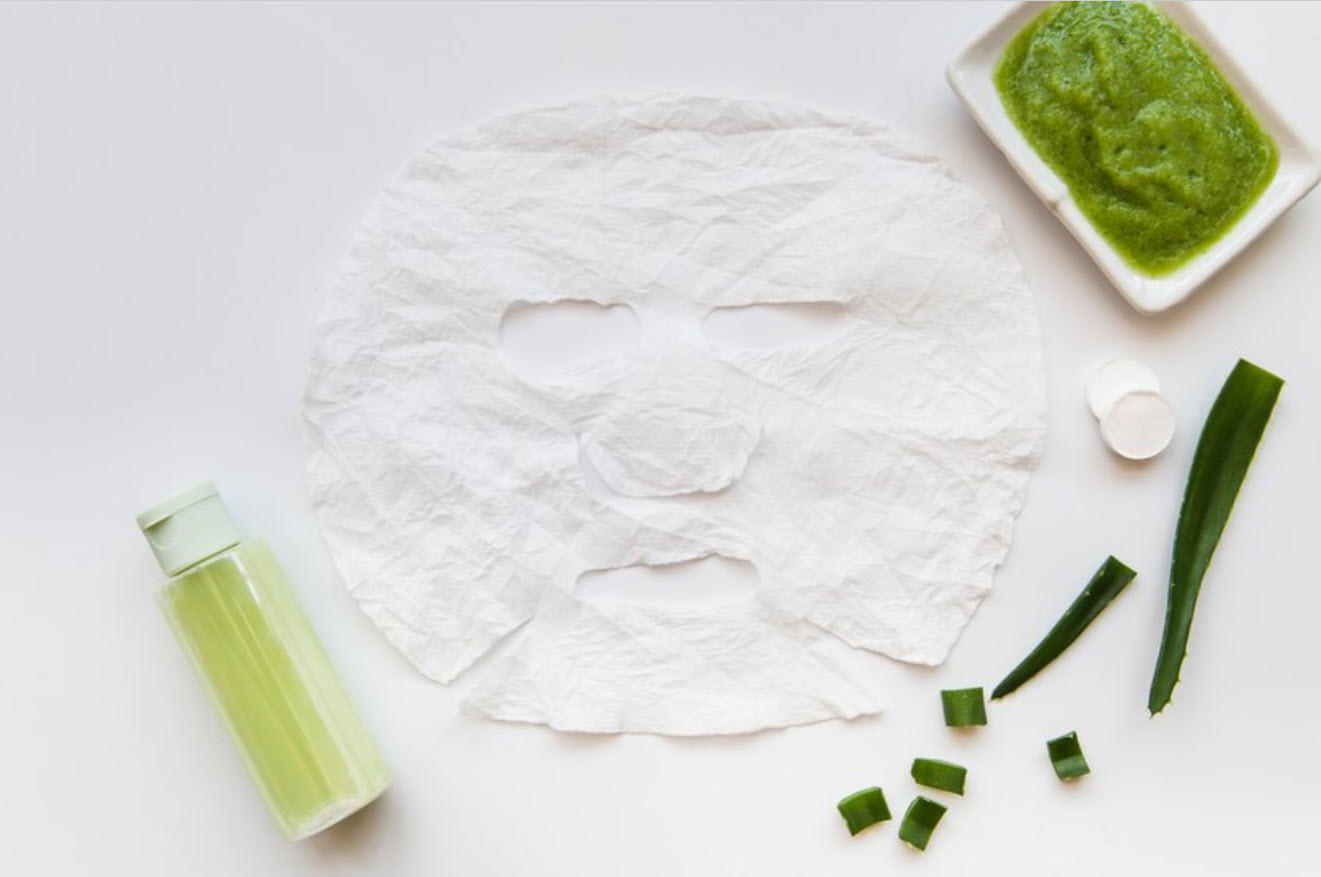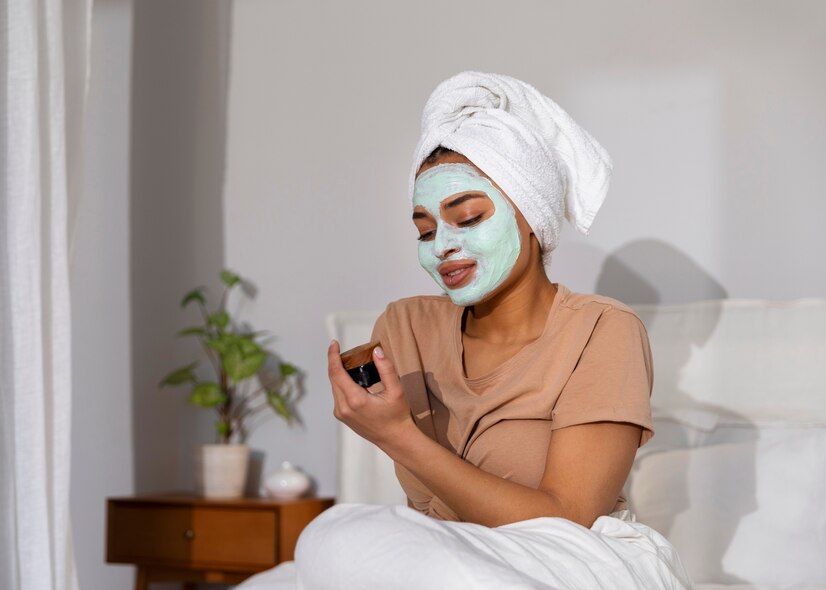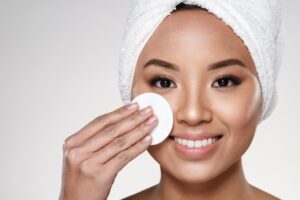Our skin isn’t always in its best state; oftentimes, it needs a bit of touching up and some extra pampering. And one particular thing that it constantly craves is hydration.
Factors such as wind, air conditioning, and even the heat from the sun all largely contribute to dehydration, leaving your complexion dull and flaky. During times like this, your skin may require extra hydration to keep it supple and soft, and one way to get this extra boost is by using hydration face masks.
When your skin is well-hydrated, it reflects light better, giving you a natural and healthy glow. Plus, hydrated skin allows your makeup to glide on smoother and last longer.
Hydrating masks are more than just a quick fix. They offer a range of benefits that go beyond simply quenching your skin’s thirst. And here are some interesting ones.

Benefits of Hydrating Masks: Locking in Moisture and Nourishing Skin
Get the soothing effect
Life can be tough on your skin, and sometimes, it shows up as irritation, redness, and sensitivity. Thankfully, hydrating masks can help in times like this. Many masks are formulated with soothing ingredients like aloe vera, ceramides, and oatmeal, which work to reduce inflammation and irritation.
This is especially helpful for those with skin conditions like eczema or rosacea. Hydrating face masks can serve as cool compresses for your skin, bringing much-needed relief and calm.
Better Protection for your Skin
One key component of healthy skin is a strong barrier function. This outermost layer of moisture acts as a shield, protecting you from environmental aggressors like pollution, harsh weather, and even free radicals.
When dehydrated, the skin’s barrier weakens, leaving it vulnerable to damage. So, by using hydration face masks with moisture-boosting ingredients, you can strengthen this barrier and keep your skin healthy.
There is a general misconception that extra hydration is only for dry skin. Well, allow me to surprise you: Oily and combination skin types can also be dehydrated, even if they produce excess sebum. So here’s how it works.
When your skin is dehydrated, it sends a distress signal to your oil-producing glands to produce more oil in compensation for the lack of moisture.
So, a hydrating mask can help regulate oil production by delivering the moisture your skin actually craves. This reduces oil production and leads to a more balanced complexion.
Sheet Masks vs. Cream Masks: Chooosing the right mask for your need
Hydrating masks are fantastic, but with so many options on the shelf, choosing between masks can be tasking. So to guide you through the process, here is a detailed comparison of two important types of hydrating masks which are, sheet masks and cream masks.
Let’s dive in!

Sheet Masks
These types of face masks are praised for their convenience to skincare.
Think of the sheet as a pre-soaked cloth masthatch has been drenched in concentrated serums and skin essencs, and also packed with hydrating heroes like hyaluronic acid and soothing aloe vera.
This sheet is placed on your face, and remains there for about 15-20 minutes for the pre-soaked ingredients to get absorbed into your skin.
As I mentioned earlier the first benefit of the face mask is the convenience that it brings. All you need is to do is simply unfold it, smooth it onto your face, and wait for the process to be complete.
Another benefit is that it provides targeted treatments. Sheet masks come in a variety of formulations, and they address specific concerns, from brightening to calming.
The sheet also acts as a barrier, protecting your skin from dust and dirt, and helping the serum penetrate deeper into the skin.
However, the limitation is that sheet masks can only be used once. You can’t adjust the amount of products absorbed into your skin, which may not be ideal for sensitive skin.
Cream Masks
Unlike Sheet masks, Cream masks offer a different experience. These face masks come in jars or tubes so that you can apply them directly to your face like a thick moisturizer. Clay masks, mud masks, and even overnight hydrating creams fall under this category.
The beauty of cream masks lies in their versatility. You can customize the amount you apply while targeting specific areas. They also come in a wider variety of formulations and textures, catering to a range of skin types and concerns.
Usually cream masks often last longer than sheet masks, making them a more budget-friendly option in the long run. However, they require longer application time compared to sheet masks. And of course, there’s the part where you have to apply and remove the masks, and this can be a bit messy, especially with clay masks that tend to harden.

Now, how do you find your perfect match? Is it a sheet mask or cream mask?
Actually, the answer depends on your lifestyle and skincare needs. If you have a busy schedule, then convenience is key, so sheet masks are perfect for that quick hydration boost or a targeted treatment on the go.
However, cream masks are your best bet if you need more versatility and control. So, ultimately, the best way to choose is to experiment! Try both sheet masks and cream masks and see which one you prefer.
Now that we know what these face mask categories are, let’s look at some interesting recipes that you can try.
DIY Hydrating Mask Recipes with Natural Ingredients
The world of hydrating masks is vast and exciting, and there’s something for everyone. Whether your skin craves intense hydration, soothing relief, or just something to target specific concerns, there’s a mask available to solve all that problem, plus these facemasks are all natural.
While store-bought hydrating masks are fantastic, there’s something undeniably satisfying about creating your products in the comfort of your kitchen.
So, you can say DIY hydrating masks are a budget-friendly way to experiment with natural ingredients and tailor them to your specific skin needs. Plus, they’re surprisingly easy to make and a lot of fun too. Let’s explore a few of them.
Avocado and Honey
This recipe is a crowd-pleaser for a reason. First, Avocados are packed with healthy fats and vitamins that deeply nourish the skin, and then honey is a natural humectant, meaning it attracts and retains moisture. This makes it the perfect mask for dry or dehydrated skin, leaving it feeling soft and supple.
To use this mask, simply mix half a ripe avocado with a tablespoon of raw honey. Apply the creamy mixture to your face and leave it on for 15-20 minutes before rinsing it off with lukewarm water.
Cucumber and Aloe Vera
If you want something that’ll suit your skin, or if you have irritated or sensitive skin, then this mask can be all you need to get your skin back in shape.
Cucumbers are naturally cooling and anti-inflammatory, while aloe vera soothes and hydrates. So, if you want that absolute calming effect, simply puree half a cucumber and mix it with a tablespoon of aloe vera gel. Apply the cool, refreshing mask to your face and relax for 15 minutes before rinsing it off.
This mask is especially helpful for calming sunburn or redness.
Oatmeal and Yogurt
This combo is the real game-changer, allowing you to solve multiple skin issues without stress. The Oatmeal and yogurt mask offers not just hydration but also exfoliation and a boost of brightness. The reason is simple.
Oatmeal is a gentle exfoliant that removes dead skin cells and promotes a smoother complexion. Plain yogurt, packed with probiotics and lactic acid, helps to hydrate and brighten the skin.
To make this facemask, mix two tablespoons of rolled oats with a tablespoon of plain yogurt and a splash of honey. Apply the mixture to your face and leave it on for 15 minutes. Then, gently massage it in circular motions to exfoliate. Rinse thoroughly with lukewarm water.
Note that before trying out any of these hydrating face mask recipes ensure you do your research properly, and also remember to do a patch test on a small area of your skin before going all in with the product.
Weekly Masking Routine: Adding a Boost of Hydration to your Skincare
Once the patch test is done, it’s time to experience the goodness of the hydration mask.
The first step is to cleanse your face thoroughly, removing any makeup, dirt, or oil that might be on the surface of your skin. This will allow the hydrating mask to penetrate deeper.
The next step is not mandatory, but you can give it a try, and that’s exfoliation. The benefit of this process is that it removes dead skin cells that can also hinder the mask’s effectiveness.
Once your prepping is all done, apply the mask to your clean skin and wait for the magic to happen. Most masks require leaving them on for 15-20 minutes, but make sure to dry the moisture on your skin before applying the mask. Also, store leftover masks in an airtight container in the refrigerator, but ensure you use them within a day or two.
Remember…
In your journey to incorporate some extra moisture into your skin, please remember that consistency is key. DIY hydrating masks can be very effective but only when you put in significant time and attention.
So, if you’ve been struggling with dry skin, now is the time to try hydrating face masks!











